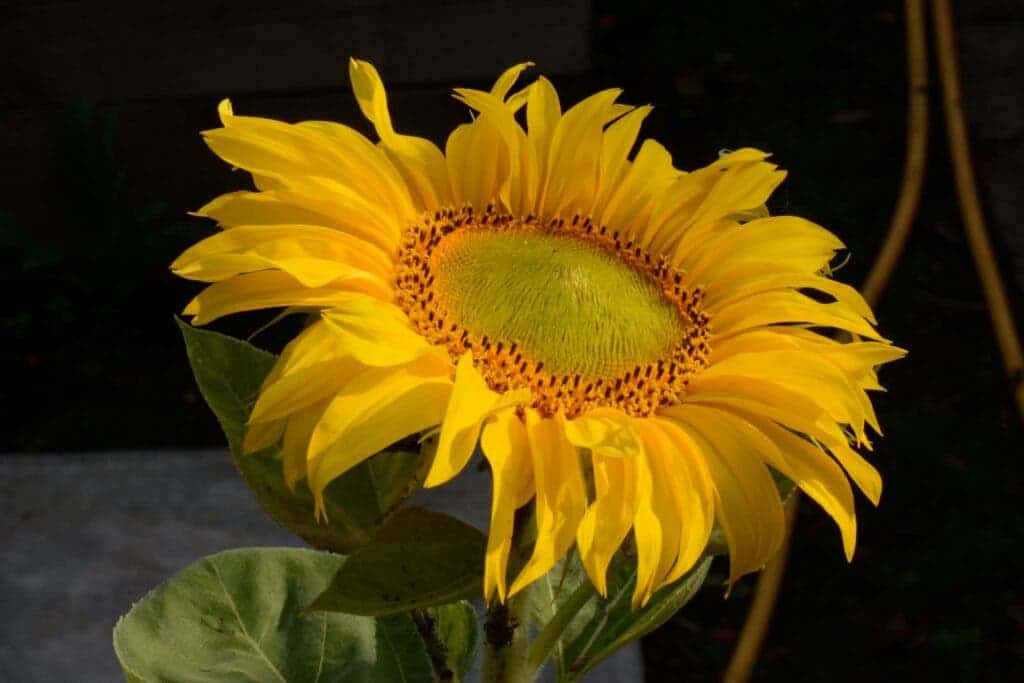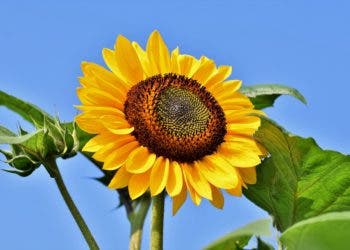Sunflowers aren’t just lovely to look at, they are also quite interesting. When they are growing, the heads turn back and forth to follow the sun during the day. But when they mature, the steams become stiff and the flower end up facing the East. In a new study, researchers from the University of California have found out why this happens.

More than just a pretty face
Sunflowers are more interesting than most people give them credit for. Their scientific name is Helianthus, which comes from the Greek words for “sun” and “flower,” and there are about 70 species of them. They can have different shapes, and some can be tall and others short. They can even have different colors. Yellow is the most common, but there are also red, orange, and purple sunflowers out there.
A sunflower is actually a composite of hundreds (sometimes thousands) of individual flowers. These develop first at the outer edge of the flower head, forming characteristic spiral patterns. Each sunflower has as many as 2,000 seeds. They are used to grow flowers but also as food for birds as humans as a healthy snack.
In a previous study, researchers found that sunflowers learn to anticipate the movement of the sun, bending from west to east so they can absorb the maximum amount of sunlight regardless of the time of day. This is because they have an internal clock called circadian rhythm, similar to the circadian rhythms that regulate activity in humans.
Now, in a new study, the same researchers from the University of California wanted to shed light on mature sunflowers’ tendency to face the East.
“It’s quite striking that they face east,” Stacey Harmer, professor of plant and senior author on the paper, said in a statement. “It’s better for them to face east, as they produce more offspring.” But how did they figure it out, and why are they doing it?
Harmer and her team artificially manipulated sunflower capitulum orientation and temperature in both field and controlled conditions and assessed flower physiology, pollinator visits, seed traits, and siring success. They found that compared to the flower heads that were facing west, the ones that were facing east were warmer in the morning.
This turns out to be quite significant. According to Harmer, this brought “energy benefit” to the bees that were foraging in the morning. In other words, turning eastwards makes it easier for the bees to forage (and pollinate) in the sunflowers. Further, the sunlight also lit up the ultraviolet markings that were visible to the bees. In a video shared by UC Davis accompanying the study, the flowers facing east are seen with a much higher number of pollinating bees compared to those facing west.
The researchers also found that the orientation of the plants affected flower development and reproductive success. Those ones facing east tended to produce larger and heavier seeds and release pollen earlier in the morning, which agrees with the times when bees visit. These effects seemed to be controlled by the temperature at the flower heard.
In another experiment, the researchers also tried surrounding sterile male plants, which produce seeds but not pollen, with normal plants facing east or west. Using genotyping, they were able to distinguish whether the male-sterile plants were pollinated by east- or west-facing plants. Pollen from the east-facing plants was responsible for more offspring than that from west-facing plants.
The study was published in the journal New Phytologist.



